Items
Site
The Medicine Chest
Is Part Of is exactly
Gender Studies
-
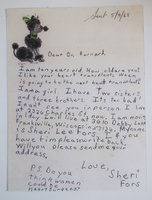
'Do you think women could be heartsurgens?'
Dear Dr Barnard, I am ten years old. How old are you? I like your heart transplants. When is going to be the next heart transplant? I am a girl. I have two sisters and three brothers. Its too bad I can't see you in person. I live at 2326 Charles St. now. I am moving in 1 day. I will live at 3610 Denny Lane, Franksville, Wisconsin. My name is Sheri Lee Fors. If you have time please write back. Will you please send me your address. Love, Sheri Fors. P.S. Do you think women could be heartsurgens? -
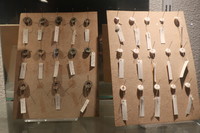
Buttons
A display of a collection of pins, buckles and buttons excavated from the washing pools used by slaves on Table Mountain. Taken from their dusty boxes in storage they are currently exhibited as part of Skotnes's 'Division of the World' (Department of Archaeology). -

A display on page 97 of the Curiosity CLXXV catalogue
"A stainless-steel dilator from the Drennan collection, a carded set of glass slides of xenopus heart sections from the Medical Microbiology collection, a 19th century game called 'Frogs and Toads' from Special Collections and a wax model of an embryo, also from Drennan. This ‘amphibian’-inspired display showcases many qualities of the curatorial method, such as visual quotation (the combination of these materials foregrounds that the shape of the dilator resembles a frog), analogy (the wax embryo, dilator and frogs allude to the resemblance between sperm and tadpoles) and juxtaposition (the frog as a scientific topic dissected and contained in the slides, and the frog as a board piece in a game played by children)" (Liebenberg 2021: 183). -
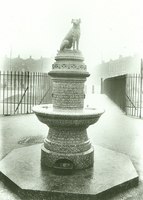
The Brown Dog Affair (1903 - 1910)
On Feb. 2, 1903, English physicians William Bayliss and Ernest Starling, gave a lecture on the digestive system to a theatre full of medical students. Also in attendance were Lizzy Lind af Hageby and Leisa Schartau, committed feminists and anti-vivisectionists. They had travelled from Sweden to enrol at the London School of Medicine for Women, attend lectures around town, and document the practice of vivisection in British universities. During the lecture, a brown terrier was wheeled out, strapped to a board. Starling had already performed one experiment on the dog two months earlier, shutting off its pancreas. This time, Bayliss cut open the dog’s neck and spent half an hour unsuccessfully trying to stimulate the animal’s salivary glands with electrodes. Eventually, he gave up and handed the dog over to a student (Henry Dale, another future Nobel laureate) who stabbed it through the heart, thus ending the lesson. What followed was a court case filed by Stephen Coleridge, a prominent barrister and secretary of the National Anti-Vivisection Society against Bayliss. After four days of testimony, the judge called the women’s account “hysterical” while giving instructions to the jury. The jurors conferred for 20 minutes, then found Coleridge guilty of libel. Anti-vivisectionists commissioned a bronze statue of the dog as a memorial, unveiled in Battersea in 1906. Its plague, which read "Men and women of England, how long shall these Things be?" led to the it being vandalised on a frequent basis. On 10 December 1907, hundreds of medical students marched through central London waving effigies of the brown dog on sticks, clashing with suffragettes, trade unionists and 300 police officers, one of a series of battles known as the ‘Brown Dog’ riots. In March 1910, tired of the controversy, Battersea Council sent four workers accompanied by 120 police officers to remove the statue under cover of darkness, after which it was reportedly melted down by the council's blacksmith. -
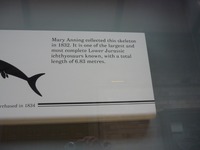
A label in the Natural History Museum
A label in the Natural History Museum accompanying a discovery made by Mary Anning. -

Simone
A year after Simone's death from cancer, Cousteau announced that he had been having an affair with a woman, Francine Triplet, for over a decade. He also had two children with her, Diane and Pierre-Yves. -
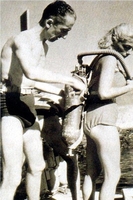
Melchior & Cousteau
In 1963 Simone Melchior became the world's first female aquanaut by living in Starfish House, an underwater habitat, for the final four days of the Conshelf II project. Although never visible in the 'Undersea World of Jacques Cousteau' series, Cousteau's wife and business partner played a key role in the operation at sea. She was the acting mother, healer, nurse and psychiatrist to the all-male crew for 40 years. Cousteau describes her as being "happiest out of camera range, in the crow’s nest of the Calypso (...), scanning the sea for whales". Her father, Henri Melchior, was director of Air Liquide (France’s main producer of industrial gases at the time) and funded the invention of the aqua lung and the scuba diving apparatus we know today. -

Mary Anning
Henry De la Beche's portrait of Mary Anning, the English fossil collector, dealer, and palaeontologist who became known around the world for finds she made in the cliffs along the English Channel at Lyme Regis. These cliffs consisted of alternating layers of limestone and shale, laid down as sediment on a shallow seabed early in the Jurassic period (about 210 - 195 million years ago). As a woman, Anning was treated as an outsider to the scientific community. The increasingly influential Geological Society of London did not allow women to become members, or even to attend meetings as guests. -

Circumference
On June 1, 1937, Amelia Earhart took off from Oakland, California, on an eastbound flight around the world. It was her second attempt to become the first pilot ever to circumnavigate the globe. -

"Bought fresh in streets of Cape Town"
"The flower sellers trading in Trafalgar Place and along Adderley Street have been doing so since at least the mid-1880s but became viewed as threats to the local flora by the European settlers at about the same time the medicine chest was first introduced to the city at the beginning of the 20th century. The settlers initially preferred to cultivate plants imported from their home countries to indigenous varieties, introducing many species to South Africa for nostalgic or practical reasons (subsequently problematic for local biodiversity) (Van Sittert 2002: 103). In the wake of the emerging nationalism of the white settlers in the 1890s, interest in indigenous plants gained momentum and was deployed to create a sense of belonging to the ‘foreign’ land (Boehi 2013: 133). A botanical discourse was mobilised to underscore ideas about identity and belonging, such as ‘roots’ and ‘ideas of rootedness’, and laws regulating flower picking (which usually occurred on the mountain) were passed in this period and were secured by the Wild Flower Protections Act in 1905 and an amendment thereto in 1908 (Boehi 2013: 133)" (Liebenberg 2021: 275). This is a label on a botanical specimen (K000225239) found in the Royal Botanic Gardens of Kew that was donated to the Gardens by UCT. Described in pen in the notes section, the specimen is of the local Erica latiflora and was collected in 1908, when it was ‘bought fresh in the streets of Cape Town’. The insider details noted on this specimen reveal much to outsiders such as Boehi (2013) and Van Sittert (2010) – scholars who have written about the colonial history of botany in the Cape and the unofficial presence of the flower sellers in the provenance of many specimens from the Cape kept in international herbaria. -

"Bought fresh in streets of Cape Town"
Royal Botanic Gardens, Kew (K). Herbarium: Royal Botanic Gardens, Kew (K), K000225239. Collection: Herbarium Specimens. Resource Type: Specimens. Collector: unknown, #14027. Collection Date:11–1908. Locality: Bought fresh in streets of Cape Town. Country: South Africa (South Africa). Identifications: Type of Erica latiflora L.Bolus [family ERICACEAE] (stored under name). Notes: Herbarium Africanum Bolusianum Flora South Western Region -
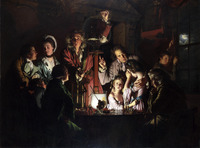
An Experiment on a Bird in the Air Pump
In Joseph Wright’s 'An Experiment on a Bird in the Air Pump' (1768), he depicts the re-enactment of Boyle’s famous experiment. Contrary to the restricted viewing of this experiment in the confines of Gresham College by the gentleman of the Royal Society, this audience includes a variety of individuals of different ages and gender, exhibiting a mixture of emotions: a young girl worriedly watches the fate of the bird, while another is comforted by her father, seemingly too upset to view the rest of the experiment; a young boy and middle-aged man look on with absorption, while two young lovers only have eyes for each other; lastly an old man meditates on a skull in a jar, and the scientist stare out at the viewer, and not at the experiment. -

Modest_ Witness@Second _Millenium
Boyle's 'New Experiments Physico-Mechanical Touching the Spring of the Air', which describes experiments with an air-pump, recounts a demonstration attended by high-born women at which small birds were suffocated by the evacuation of the chamber in which the animals were held. Since the ladies interrupted the experiments by demanding that air be let in to rescue a struggling bird, Boyle reported that “to avoid such difficulties, the men later assembled at night to conduct the procedure and attest to the results” (Haraway 2004: 232). -
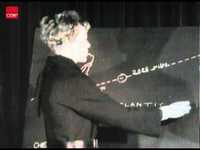
Amelia
Amelia Earhart explaining her flight and the welcome she received -
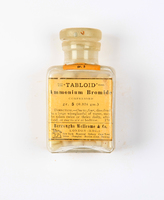
Ammonium Bromide
"Nerve sedative. One or two, dissolved in a wineglassful of water, three times a day, in hysteria, headache or neuralgia. As a sedative, four at bedtime " (BWC 1925:116).


